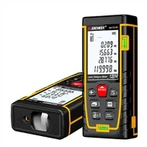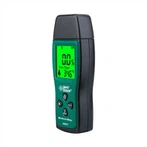How to choose a special CCD for microscope?
The requirements for optical microscope imaging are getting higher and higher, and the high requirements for CCD imaging equipment are also following. Faced with so many microscope-specific camera CCDs, it is really overwhelming when purchasing. How to choose and buy CCD? What elements should be paid attention to?
Before purchasing a microscope-specific CCD, first understand what a CCD is. CCD is a charge coupled device, which can be called a CCD image sensor. It is a semiconductor device that can convert optical images into digital signals. The tiny photosensitive material implanted on the CCD is called a pixel (Pixel). The more pixels contained on a CCD, the higher the picture resolution it provides. CCD consists of three layers: "miniature lens", "color separation filter", and "photosensitive layer". CCDs are widely used in digital photography, astronomy, especially optical telemetry, optical and spectral telescopes, and high-speed photography such as Lucky imaging.
When purchasing a microscope-specific CCD, you must first clarify the purpose and use of the purchase, and choose a suitable CCD according to your needs. It is not advisable to blindly pursue the purchase of a microscope-specific CCD with too high pixels, as long as it is suitable for use and can achieve the purpose of use. When buying, try to select products with high ratios, and narrow the scope of purchase to your own psychological price, so that you can lock the target more quickly. You can choose whether to purchase the CCD together with the microscope according to actual needs. When you can ensure that it can be used with the microscope, you can purchase the CCD yourself, which can effectively reduce the cost.
The main factors to pay attention to when purchasing a microscope-specific CCD include physical resolution, chip size, pixel size, signal-to-noise ratio, gray value, etc. The physical resolution refers to the resolution of the CCD itself. Under the same chip size, the more pixels, the higher the resolution. The larger the size of the CCD chip, the better the imaging effect. Pixels are the basic units that make up the photosensitive layer of a CCD. The more pixels per unit area of a CCD, the higher the resolution. The higher the signal-to-noise ratio, the more realistic and clearer the image quality. The higher the gray value, the more gray levels the camera can distinguish and the richer the colors.






